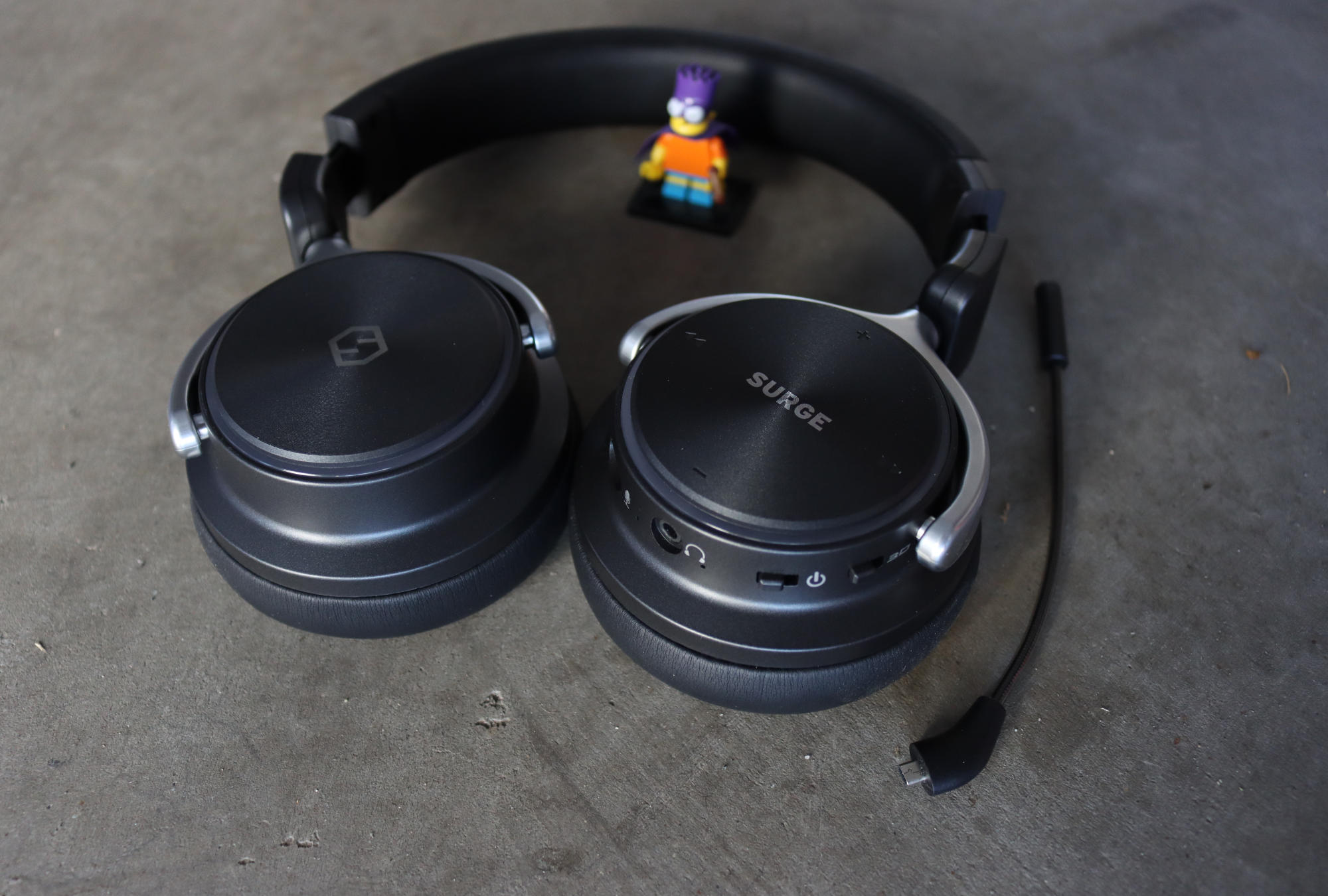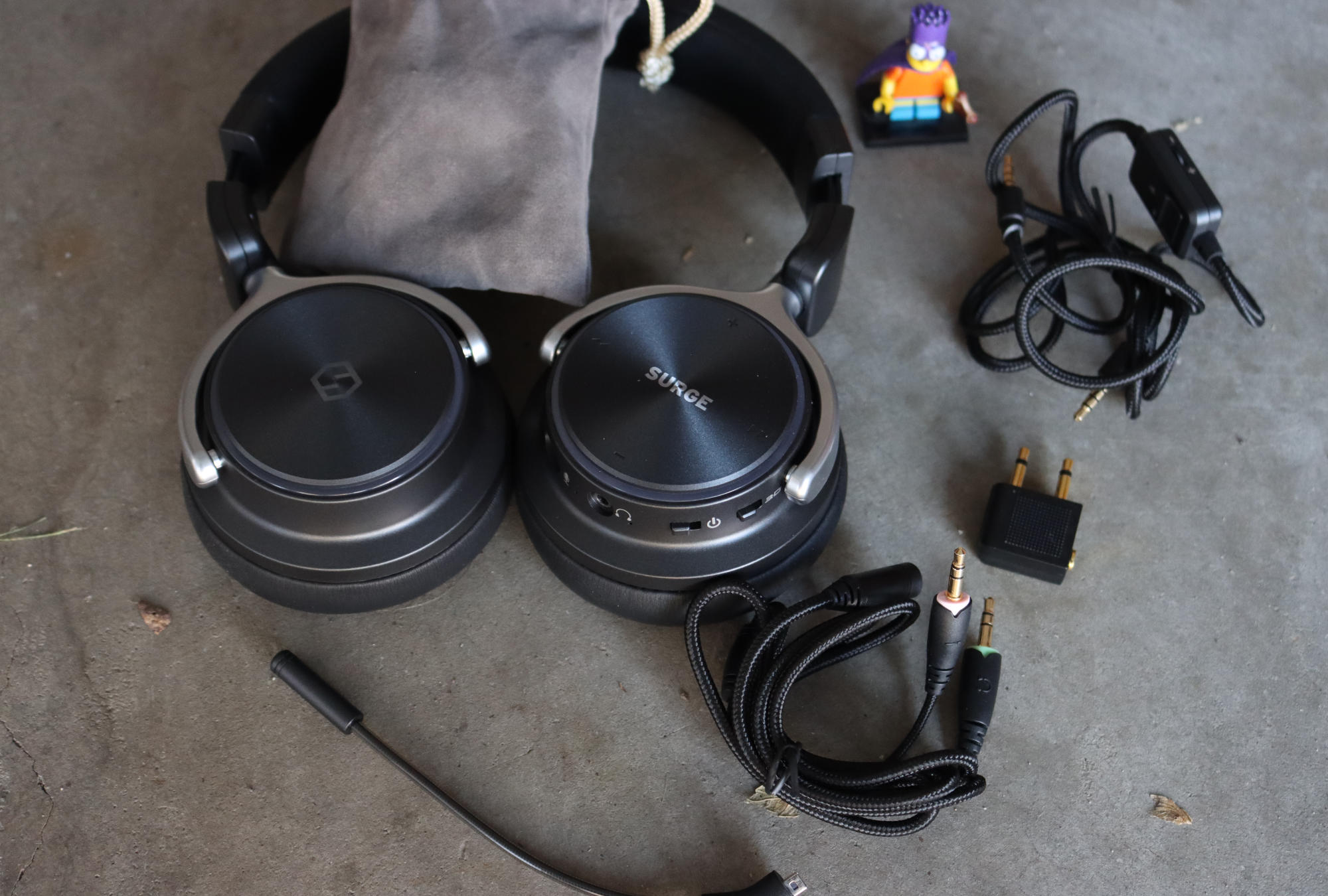Many months ago I was listening to MacBreak Weekly and Alex Lindsey recommended a set of headphones that he loved. They had proper surround sound and the big selling feature for me was the fact that they had mic that you could plug in to the headset and you’d get decent sound.
Those headphones were the Surge 3D headphones and I grabbed them right away from the Indiegogo campaign.
Now, did these headphones live up to the hype from Alex’s prototype? Let’s find out.
Pairing
The Surge 3D does pair to multiple devices, but I have no idea how many because I haven’t been able to find any manual for it that says how many devices it pairs to. I have it paired to my iPad and my iPhone so it pairs to two devices.
To pair your headphones with your first device, simple turn them on and head to your bluetooth settings to pair the headphones. For the second device turn the headphones off and then back on holding the power button in it’s furthest position until you see the headphones show up in your pairing dialogue. Then just like other Bluetooth devices, select them and they’ll pair.
Fairly regularly I’ll head out for a walk with my Bluetooth headphones and my iPhone while leaving my iPad at home. For my other headphones they simply disconnect from the iPad when it’s out of range and I keep walking without issues. With the Surge 3D it disconnects and then I no longer get any audio through my iPhone. The iPhone thinks it’s connected, and it keeps playing my audio, but I hear nothing until I turn the headphones off and on again.
Yup that’s super annoying.
Battery life
Battery life seems to be fine. They last for a few days of use for work. That’s listening to muse for a few hours, a few calls, and some standby time. One of the things I like to see in a headphone is that they report their battery level to iPadOS, and these headphones do check that box.
The Surge 3D Microphone
The microphone on the Surge 3D is a funny beast. In part because it uses their proprietary connection, which doubles as yet another cable you have to carry to charge the thing, in part because it doesn’t seem to register as a microphone in Ferrite. As I ran tests for the audio quality of the microphones on various headphones I have few of my Bluetooth headphones showed up as audio sources that Ferrite could work with 1.
The thing is that these headphones do work with the Voice Memos app in iPadOS and iOS. They also seem to work as a microphone in Ferrite if I plug them in with the USB-C to 3.5mm adapter2.
Overall, the audio quality on the Surge 3D is only okay. Testing with a friend over Zoom they said my Plantronics Backbeat Pro headphones sounded better. They felt the Surge 3D sounded muffled.
Audio Quality
One of the big things that Alex Lindsey loved was that these were decent headphones for surround sound. I listened to a few movies that had surround and yes you can hear things flying around your head. It was neat, but I admit to not caring that much about surround.
As for music and podcast quality, it’s fine. Nothing to rave over, but not bad. Not quite as good as my Plantronics BackBeat Pro headphones, but I wouldn’t complain.
My biggest dislike in the audio department is that they don’t have noise cancelling like my Plantronics. Working in a coffee shop I have to turn the volume up much higher than I want to so that I can hear the music going on and drown out the distractions inherent to that type of working environment.
The second biggest dislike is that they always have some little hum or beeps going in the background if they’re powered on. I say it’s my second thing because as soon as you have any other audio going you can’t hear it. My Plantronics also have the same issue, but only if the noise cancelling is on and again you can only hear it if there is no other noise…and you don’t need noise cancelling then. For my Plantronics in my office, I just turn off noise cancelling and then they’re a silent headphone.
The Surge 3D is always making some noise if they’re on, and that noise is never going to cut out sound around you.
Another annoyance, okay problem, with their Bluetooth connectivity is that they seem to skip a bit all the time. I’ve never had a clean connection to any devices, even if they were only paired with one device. This missed audio makes them not the headphones you want if you’re going to enjoy music.
Surge 3D Build Quality and Comfort
The Surge 3D is a plastic set of headphones and that means they’re liight on your head, but they also feel inexpensive. My Plantronics are all plastic, but they don’t feel cheap like the Surge does. The Surge joints also squeak as you take them off or on and while that’s not a deal breaker, dang it’s bothersome.
Another drawback to these headphones is there proprietary charging cable. They use it to do double duty with the headphone connection so I guess good job on saving ports? I’d rather see a USB C cable here or at least something USD standard instead of some extra cable I have to carry if I want to take them out while travelling.
While I can’t find mention of this in their marketing documents, Mr Alex Lindsey does say that they are over the ear headphones. Maybe he has mouse ears, or I have elephant ears, but these are on ear headphones for me. I very much dislike on ear headphones. If I had to pick some on ear headphones, these are the most comfortable ones I’ve ever tried, but I still don’t like it.
The problem with on ear headphones is that they press my ears down on to hats or sunglasses when I’m wearing them. It doesn’t start out as annoying, but after a few hours it’s painful. As i write this I’ve been out working remote with headphones on for about 7 hours today and my over ear Plantronics are still comfortable. The Surge 3D get uncomfortable on my ears after about 90 minutes, which wouldn’t even cover the length of a current Hollywood blockbuster movie with good surround sound.
The lightness of the Surge 3D does give them one zone of comfort. Never did I find them uncomfortable on the top of my head like some other headphones can get after extended use.
Surge 3D Controls
While the Surge 3D technically does have a full suite of controls, good luck getting them to work. The controls are on the left ear cup and they’re capacitive. I’ve never been able to skip tracks or adjust the volume. The only thing I’ve even been able to get them to do is pause the music, but I can never repeat the incantation needed to start music again.
For hardware buttons they have a power button and a “3D” button which is supposed to do something with the surround sound I guess. Again, no manual and details are thin so I’m totally guessing. I really don’t hear a difference at all except a slight change in the total loudness.
One feature they don’t have that I’ve loved with my other headphones is the auto-pause of music when I take my headphones off. The Surge 3D doesn’t do this, and since you can’t actually control them from the headphones, you’re going to need to dig out your phone and stop the audio from there. Of course, you could also power the headphones off to which would stop the audio.
Should You Purchase the Surge 3D Surround Sound Headphones
Nope.
To say more, the lack of controls that are usable combined with the other features that simply don’t work well means I’m regretting my purchase. Sure it has a mic, but that single feature doesn’t mean I can throw them in my bag and trust them to be awesome headphones for the full day. My go to over the ear headphones are still my Plantronics BackBeat Pro’s, just like they have been for over a year.
Later we’ll see if the PowerBeats Pro unseat the Plantronics.
My Gear
- My gear: https://curtismchale.ca/my-gear
- Patreon: https://patreon.com/curtismchale
- Music: https://curtismchale.ca/epidemic
- This includes the PowerBeats Pro which I acquired just as I finished off this review ↩
- The Surge 3D comes with a few cables to connect to various devices. The one you’d use for iPadOS includes a mute and volume switch. Unfortunately the mute switch triggers Siri so you’re never going to use it. In the sound samples below I walked about 10 feet away from my iPad and faced into my garage and spoke…at about the same volume. Clearly it’s not scientific, but it’s an open room you may use to record your voice. I also did a set of samples sitting in Starbucks to see how they did with noise around me ↩

